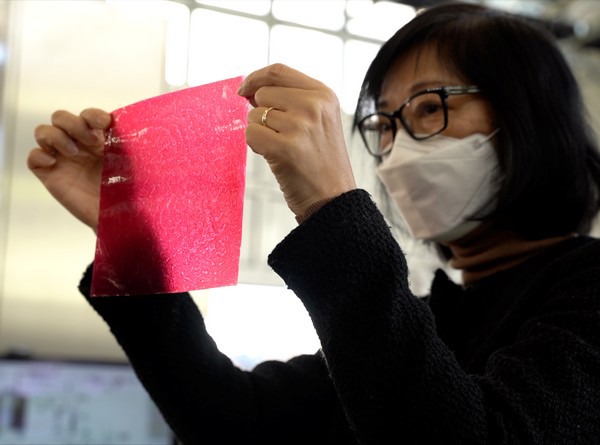A new study by Oregon State University scientists outlines a key advance in turning apple waste into an environmentally friendly packaging material that could serve as an alternative to plastic.
Recycled newspaper has traditionally been the main ingredient of so-called molded pulp packaging products, which have become increasingly popular because they are compostable. But the supply of recycled newspaper is in decline, creating a market for substitute materials.
Yanyun Zhao, an Oregon State professor who leads a research team focusing on sustainable food packaging and processing, has studied apple pomace and other byproducts from processing fruit and vegetable juice and winemaking as an alternative for recycled newspaper in molded pulp manufacturing. She and the team received a patent for this research.
“Right now, apple pomace is typically just composted or used for animal feed,” said Zhao, whose research aims to reduce food loss and waste across the food supply chain. “We thought why not turn it into an environmentally friendly product that meets an industry need.”
Zhao envisions apple pomace being the main ingredient for molded pulp packing products such as take-out containers, flower pots, beverage cartons and bottles and clamshell packaging used for fruits and vegetables.
She is focused on apple pomace, in part, because it is readily available in the Pacific Northwest. When apples are processed for juice about 70-75% of the apple goes into the juice, leaving the remaining 25-30% as pomace.
One of the key problems to solve in creating pomace and paper-based packaging is improving water resistance so that it could withstand high moisture, liquid food or non-food items and products stored under high humidity conditions.
In a just-published paper in Food and Bioproducts Processing, the team sought to create eco-friendly, bio-based, compostable and cost-effective solutions that would improve the hydrophobicity, or water resistance, of the apple pomace-based molded pulp products.
They used two strategies: incorporating polymers and compounds with characteristics to improve water resistance into the pulp formulation and applying superhydrophobic coatings on the product surface. The polymers and compounds studied include lignin, chitosan and glycerol.
Lignin is a polymer that forms key structural materials in the support tissues of most plants. Rhubarb pomace, which is particularly lignin rich, was used in this study.
Chitosan is a bio-based polymer commonly used in the papermaking industry. A previous study from Zhao’s team found that chitosan reduced water absorption of cellulose nanofiber (CNF) films significantly through adsorption of chitosan onto CNF fibers via hydrogen bonds.
Finally, glycerol is an organic compound often added to a material to make it softer and more flexible. Previous studies had shown that at low levels glycerol decreased water absorption.
The researchers determined the optimal amounts of those polymers and compounds while also adding a small amount of cardboard fiber for stability of the molded pulp packaging products.
For more information: today.oregonstate.edu

